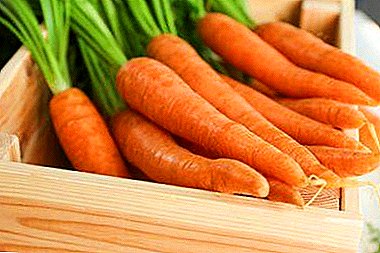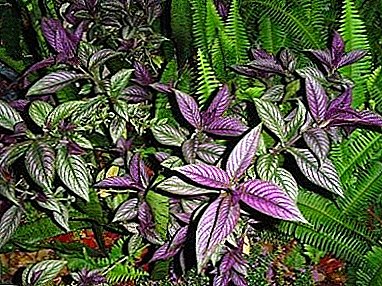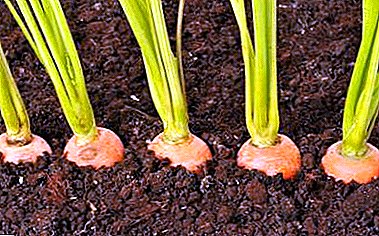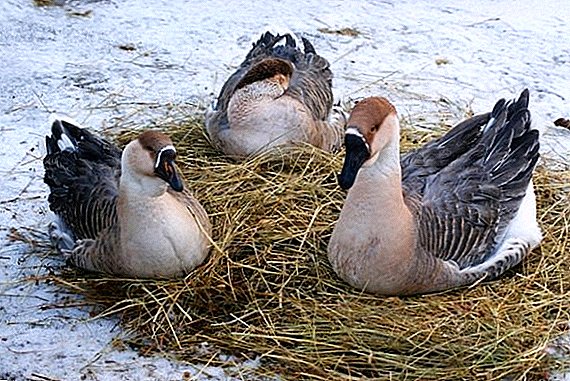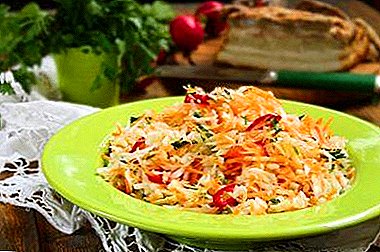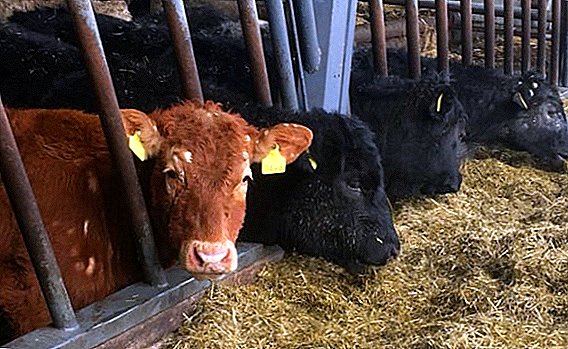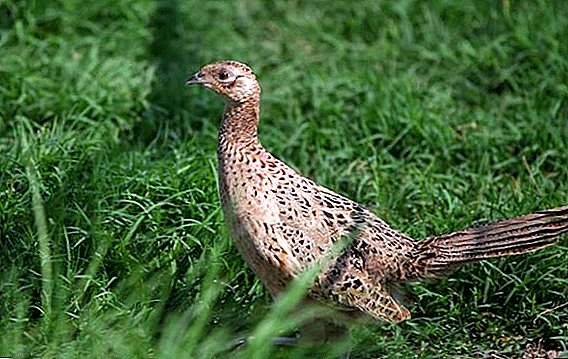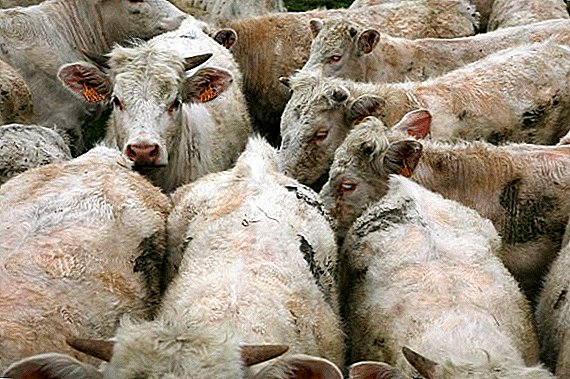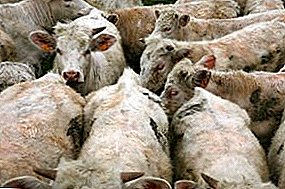 A complete and balanced diet is a major factor in the health of cattle. However, animals do not always get all the necessary vitamins from the feed or on the run, so there is a need for additional additives.
A complete and balanced diet is a major factor in the health of cattle. However, animals do not always get all the necessary vitamins from the feed or on the run, so there is a need for additional additives.
Let's see how vitamin deficiencies affect cows and calves and how to cope with vitamin deficiencies.
What is animal vitamin deficiency
All processes in the body of animals depend on the correct balance of vitamins, micro-and macronutrients. They control the metabolism, affect the productivity and fertility of cows.
Cattle get the necessary vitamins from the feed, but this amount, especially in the winter, may not be enough. As a result, vitamin deficiency occurs - lack of vitamins, or hypovitaminosis - their lack.
Find out what vitamins calves need to grow.
In case of deficiency of these elements, animal growth slows down, productivity decreases, the work of almost all organs and body systems deteriorates, libido decreases, ovarian dysfunction and impaired spermatogenesis are manifested. There is also a decrease in immunity, susceptibility to infectious and inflammatory diseases, and even the death of young animals. 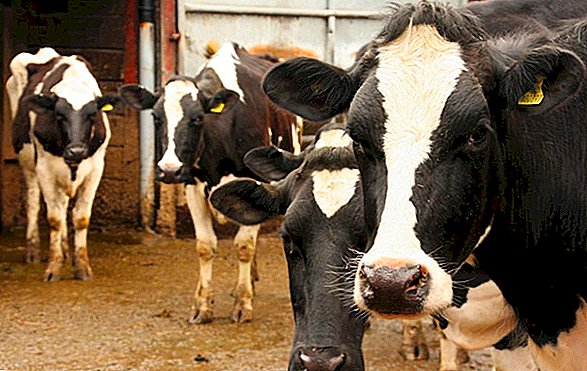
Why and who most often happens
Avitaminosis is associated with an imbalance of nutrition, when the intake of vitamins in the body is less than the need for them. It usually develops at the end of the winter-stall period, when during the winter the cow consumed a supply of useful substances and for a long time did not receive enough ultraviolet light.
At this time, lethargy, exhaustion, refusal of food and all other changes indicating a deficiency of vitamins begin to appear.
Did you know? Marble beef, which is considered the most expensive meat in the world, is obtained from wagyu cows. For centuries, they are bred only near the city of Kobe in Japan. In this case, the cows are very well looked after, they give only the best feed, they rub the skin of sake every day and water it with beer.
Especially sensitive to this phenomenon are cows and dairy cows, young animals and sires. The same is manifested when keeping calves in poor conditions - in a cold, dirty and damp room.
Then even a good diet will not be able to compensate for the consumption of internal energy, which goes to maintain the necessary body temperature and the work of all organs.
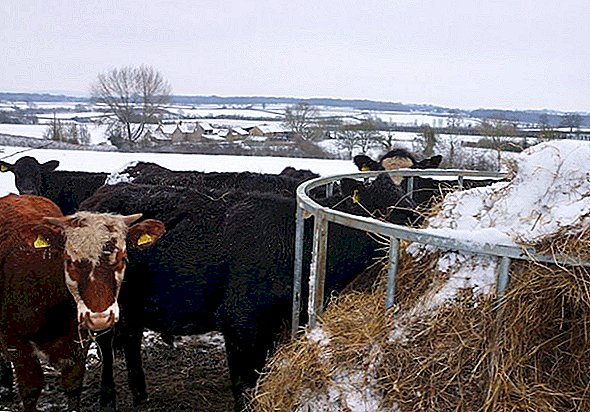 Most often, beriberi is observed in February, March, April
Most often, beriberi is observed in February, March, April
Varieties
The lack of a single vitamin in the body is called mono-vitamins. However, more often cows suffer from a deficiency of several vitamins at the same time - polyavitaminosis.
Learn how to feed dry cows.
Vitamin A A
A lack of vitamin A in the diet indicates a lack of carotene in it. This is most often affected calves and cows with increased lactation. In the presence of a full-fledged diet - silage with rich vitamins and combined feed - you need to check the work of the gastrointestinal tract. Some gastrointestinal problems are bad for the absorption of carotene from food.  Three month old calf with signs of vitamin A deficiency
Three month old calf with signs of vitamin A deficiency
Symptoms:
- loss of appetite, slower growth of young;
- dryness of the mucous surface of the eyes;
- blurred vision - animals bump into different objects, lean too much toward the ground;
- inflammation of the respiratory and digestive organs;
- stopping estrus in cows and reducing the quality of semen in bulls;
- the threat of miscarriage, oxygen and water starvation of the fetus, premature birth.
Find out how the cow pregnancy goes.
Treatment
In addition to the basic diet, you should take vitamin A. For replenishing carotene and rapid growth, calves also use the following remedies:
- "Biovit 80" - improves the digestive tract and strengthens muscle tone;
- "Eleovit" - improves immunity and can be used from birth;
- Vilofoss - animals of any age are saturated with proteins and vitamins.
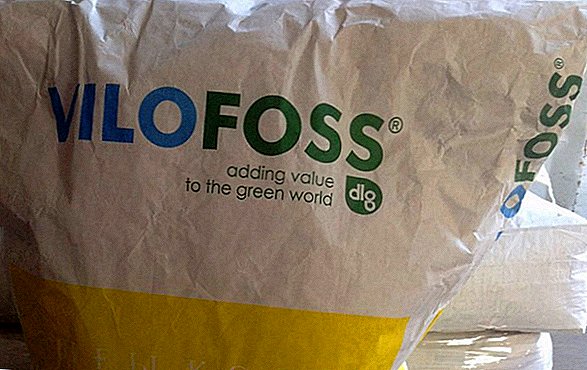 Vilofoss produces premixes for beef and dairy cattle and calves
Vilofoss produces premixes for beef and dairy cattle and calvesCarrots, fish oil, alfalfa hay, mixed fodder with vitamin A are also introduced into their diets. In addition, it is good to give oatmeal with grated carrots or potatoes and oatmeal.
If it is impossible to replenish vitamin A with dietary correction, its daily oral intake to pregnant cows (50-100 thousand IU) and one-time intake to calves (1 million IU in the first feeding or from a bottle) is prescribed. Cows can also be administered 500,000-1,000,000 IU of the drug intramuscularly with a repeat of 1.5-2 weeks.
Important! The diagnosis, the appointment of any drugs and their dosage should be made exclusively by a qualified specialist - a veterinarian.Prevention
In order to prevent the disease, in the spring and summer it is necessary to prepare vitamin feed, as well as a sufficient amount of carrots, beets and potatoes. In addition, it is important to maintain a stall for animals in good condition. It should be clean, insulated and well lit.
Vitamin B
This type of beriberi is more common in young animals, in adults it is quite rare.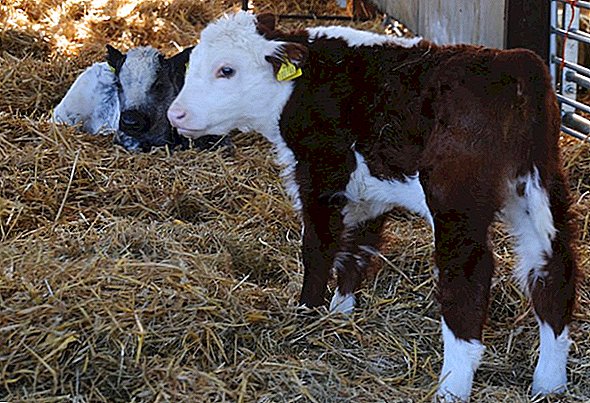 For the prevention of avitaminosis in calves, special attention should be paid to feeding the cow after calving.
For the prevention of avitaminosis in calves, special attention should be paid to feeding the cow after calving.
Symptoms:
- nervousness, unhealthy activity, cramps;
- there is a tremor in the muscles and ataxia (impaired coordination of movements);
- the animal lifts its legs high and bends strongly, as if walking along the parade-ground;
- disorders of the digestive system, loss of appetite, exhaustion, growth retardation;
- skin problems - peeling, balding hair;
- swelling in the joints.
Find out why the calf is sluggish and eats poorly.Treatment
It is necessary to pay attention to changes in the behavior of the animal, without waiting for the appearance of complications. At the first symptoms should be added to the diet of a cow or calf carrots, brewer's yeast, bran.
When symptoms of avitaminosis are pronounced, drugs of group B are prescribed. Usually, 0.1% cobalt chloride solution in a dosage of 100 ml is used for therapy.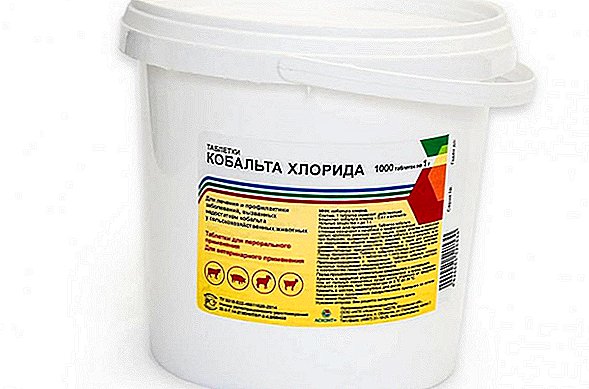
Prevention
It is necessary that the B vitamins are always contained in the diet of cows. They are found in bran, green hay, carrots, fodder or baker's yeast. In winter, you should add in the preparations of vitamins of group B.
Find out what to give the cows beet pulp.
Vitamin D
Vitamin D is produced by the body of cattle under the action of ultraviolet rays. It is responsible for normal calcium and phosphorus metabolism, and its deficiency can lead to osteomalacia (softening of the bone tissue).
Most often, young lactation and high lactation cows suffer from vitamin D deficiency. This is due to the accelerated metabolism in these groups of animals.  Rickets in calf
Rickets in calf
Symptoms:
- low animal activity, lameness;
- rickets, abnormal development of young limbs;
- weight loss, hollow sides;
- pain on palpation of the ribs, pelvic bones, joints;
- eating unusual food - stones, bones;
- licking various items - walls, rags, urine;
- jaw deformity, gingivitis, tooth loss.
Important! The initial stage of this type of avitaminosis is mild, so you need to carefully monitor the animals so as not to miss the very first signs of the disease.Treatment
The diseased animal should be separated from the general herd, its maintenance and nutritional conditions should be improved, and daily walking, especially in sunny weather, should be carried out. Great helper in avitaminosis - juicy green grass. 
If there is a severe lack of vitamin D, drug therapy is prescribed. Previously, to determine the causes of the disease, the animal takes blood for the content of electrolytes.
The treatment may be:
- daily sunbathing with ultraviolet lamps lasting 10-15 minutes;
- intramuscular injections of an oil solution of vitamin D in the amount of 100-200 IU;
- with progressive symptoms, intramuscular 20% calcium gluconate solution;
- intravenous administration of a 10 percent solution of calcium chloride.
Did you know? The domestication of cows happened about 8 thousand years ago, and since then these animals are indispensable helpers of people. It was proved that cow's milk is able to bind toxins in the human body, which is why it must be given to all those working in hazardous industries.
Prevention
In the spring and summer period, a sufficient amount of silage should be stored - corn, clover, alfalfa. Bone meal and forage chalk are added to it. When it is impossible to store silage in winter, the grass is dried and fed to cattle as hay. 
Avitaminosis E
This vitamin is responsible for the work of all internal organs, metabolism, fat metabolism and the reproductive system of animals. Its deficiency leads to a problem with the appearance of offspring and the healthy development of the young.
Symptoms:
- metabolic disease;
- infertility of animals;
- slowing ovarian function and lack of heat in females;
- deterioration in quality and reduction in the number of semen in bulls;
- premature and stillborn fetus;
- hidden abortion in the early stages;
- enzootic muscular dystrophy in calves;
- in severe cases - lameness, paralysis, degenerative processes in the cardiovascular system.
Find out what to do with infertility, vaginal prolapse, vaginitis, white discharge from the cow.Treatment
To replenish the supply of vitamin E in the body is often used oil concentrate - "Trivitamin." His dose is prescribed individually and only by a specialist. 
Prevention
Vitamin E is found in high concentration in wheat germinated grains and green fodder, therefore it is necessary to ensure sufficient amount of them in the diet of animals. In addition, in the winter time you need to provide additional vitamin supplements.
Find out what to do if cows have anaplasmosis, atony of the anterior stomach, babesiosis, abscess, parainfluenza, fever, milk stones, mastitis, lice, versicolor.Now you know what are the symptoms of a lack of various vitamins in the body of cows and calves. Like any disease, it is better to prevent vitamin deficiency, and take preventive measures in time. Having provided the animals with balanced nutrition, good care and walking in the warm season, it is possible to practically reduce the likelihood of developing this disease.


